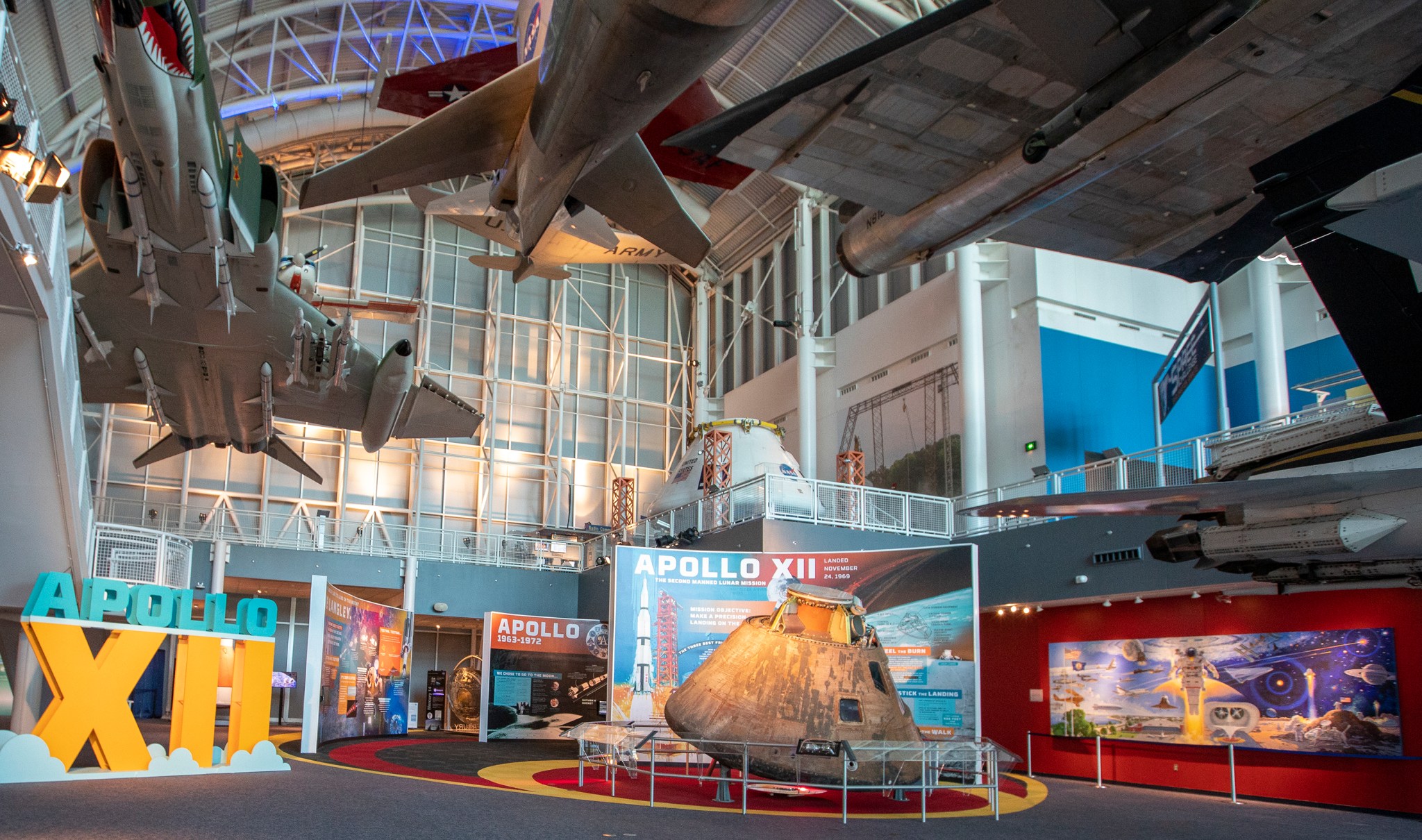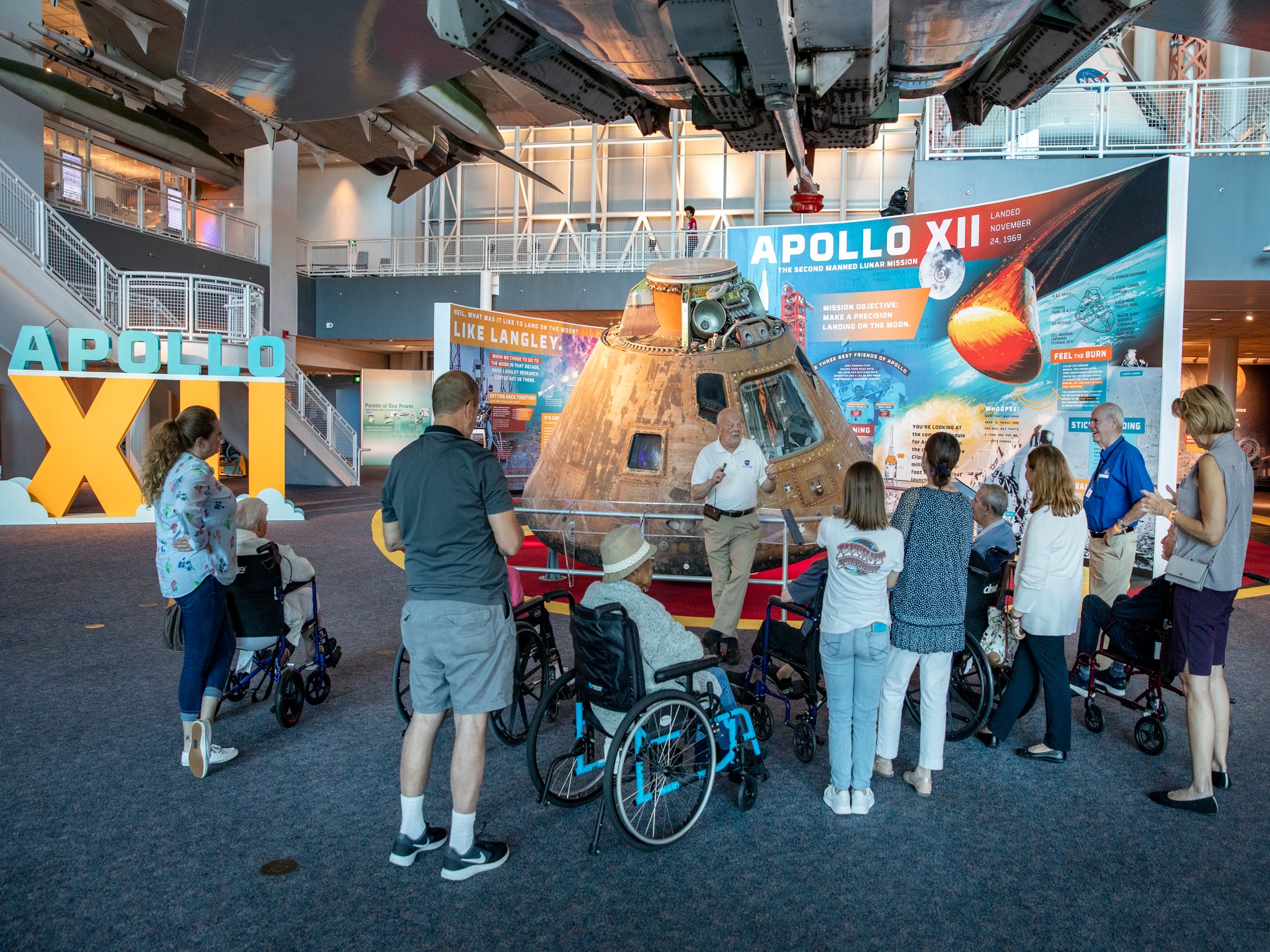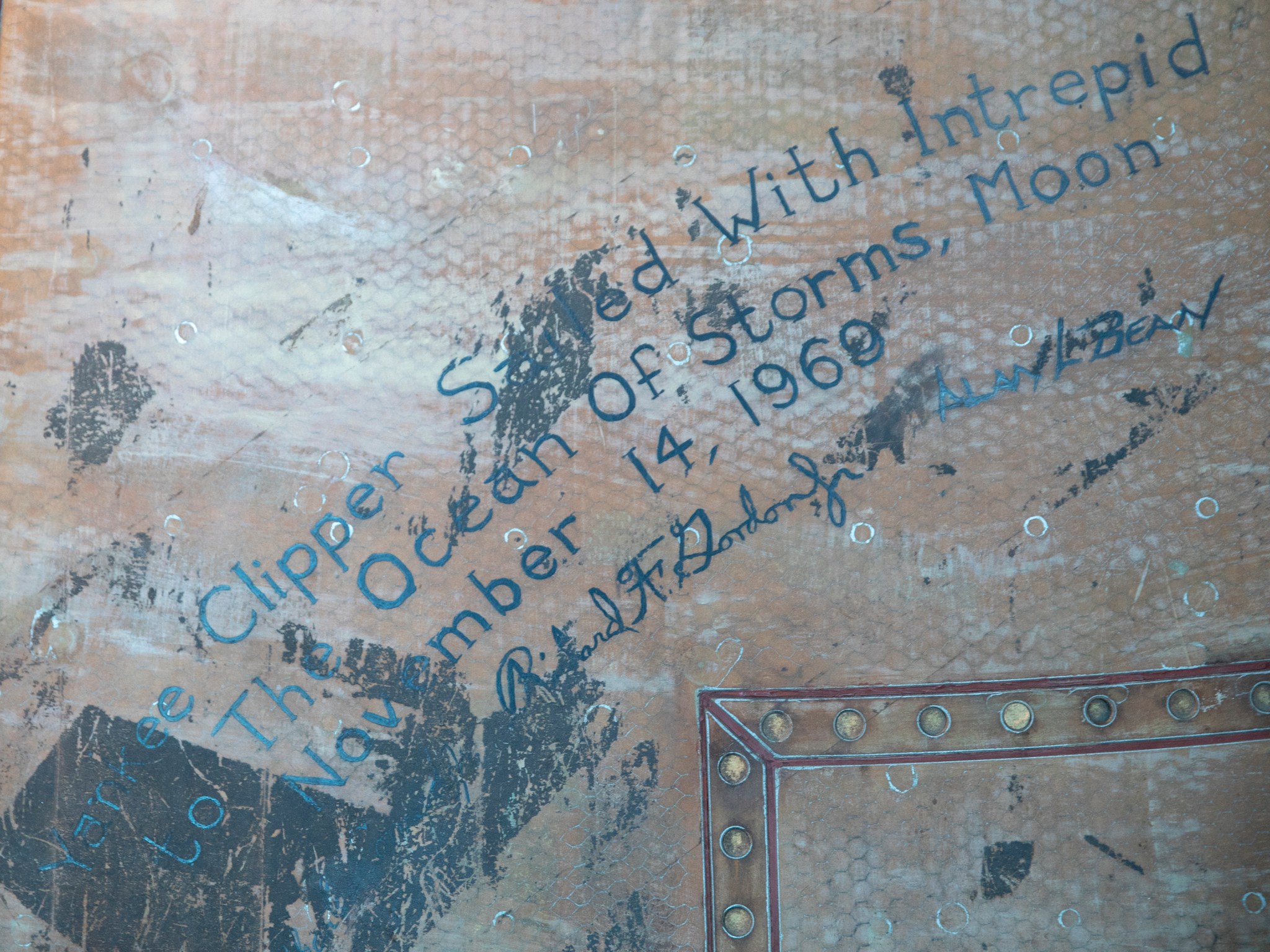When visitors enter the Virginia Air & Space Center, they are greeted by history in flight and space. No exhibit showcases both more than a capsule that orbited the Moon.
The Apollo 12 command module was part of the second manned mission to the Moon. It’s now part of a prominent display at the Hampton, Virginia, museum, which is the official visitors’ center of NASA’s Langley Research Center.
“We consider this to be the gem of the museum,” said Robert Griesmer, the Virginia Air & Space Center executive director and CEO.
The command module lies in the heart of the museum’s first floor, and is a popular stop for visitors, said museum docent Jim Pouchot.
On Nov. 14, 1969, Apollo 12 launched from NASA’s Kennedy Space Center in Florida, carrying astronauts Richard “Dick” Gordon, Alan Bean and Charles “Pete” Conrad on the agency’s second manned lunar mission. The capsule weighed 13,500 pounds (6,123 kg) at launch, orbited the Moon 31 times in 61.6 hours, and traveled 960,000 miles (1,544,970 km) on its lunar mission. Apollo 12 returned to Earth on Nov. 24, 1969 with a successful splashdown in the Pacific Ocean.
“It was a precision landing,” Pouchot said. “It was a bullseye.”
The command module remains untouched from its 1969 mission; it even shows the damage done by the Earth’s atmosphere on the bottom of the capsule, which reached temperatures of 5,000 degrees Fahrenheit (2,760 Celsius) upon re-entry of Earth.
“The heatshield did its job,” Pouchot said.
The command module, which is on loan from the Smithsonian National Air and Space Museum in Washington, D.C., is surrounded by static and interactive displays. Griesmer has plans to add more content, such as a Mars rover, to the exhibit for visitors, tying everything back to NASA’s first field center.
“Everything we do in our master plan goes back to Langley,” he said.
This exhibit shows Langley contributions to the Apollo moon mission, where the center was an integral part of testing and astronaut training. Langley is also playing a part in NASA’s return to the Moon and the journey to Mars via the Artemis lunar exploration program as the center continues to play an important part in NASA’s space exploration missions.
- For more information on the Virginia Air & Space Center, click here.
- For more information on the Apollo 12 mission, click here.
- For more information on the Artemis program, click here.
Eric Gillard
NASA Langley Research Center





























